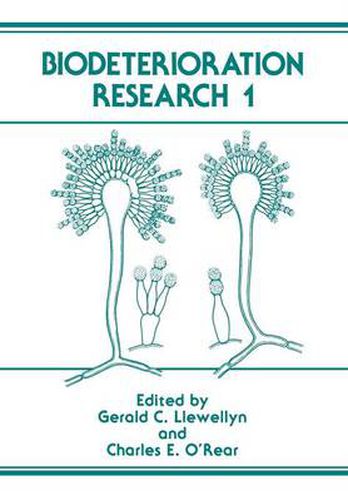Readings Newsletter
Become a Readings Member to make your shopping experience even easier.
Sign in or sign up for free!
You’re not far away from qualifying for FREE standard shipping within Australia
You’ve qualified for FREE standard shipping within Australia
The cart is loading…






This title is printed to order. This book may have been self-published. If so, we cannot guarantee the quality of the content. In the main most books will have gone through the editing process however some may not. We therefore suggest that you be aware of this before ordering this book. If in doubt check either the author or publisher’s details as we are unable to accept any returns unless they are faulty. Please contact us if you have any questions.
Man-made textile fibers are frequently encountered as trace evidence in criminal investigations. This study examined the effects of burial in soil on the biodeterioration of synthetic textile fibers such as cellulose acetate, nylon, polyesters and acrylics. Cellulose acetate fibers began to show signs of decomposition within two months after burial in common garden topsoil and were completely degraded within four to nine months. It was found that severely decomposed cellulose acetate fibers could be identified by pyrolysis-gas liquid chromatography even when other methods such as polarized light microscopy and dispersion staining failed. The solubility behavior of the cellulose acetate fibers also was altered. The other types of fibers showed no detectable alteration at the end of the twelve-month study. REFERENCES American Association of Textile Chemists and Colorists (1971). AATCC Technical Manual, AATCC, Triangle Park, NC. Cook, R., and Paterson, M.D. (1978). New techniques for the identifi- tion of microscopic samples of textile fibers by infrared spectroscopy. Forensic Sci. Int., 12, 237-243. DeForest, P.R., Geansslen, R.E., and Lee, H.C. (1983). Forensic Science: An Introduction to Criminalistics, McGraw-Hill Book Company, NY. Federal Bureau of Investigation (1978). Solubility schemes by generic class. Federal Bureau of Investigation, Washington, DC. Fong, W. (1982). Rapid microscopic identification of synthetic fibers in a single liquid mount. ~ Forensic Sci., 27, 257-263.
$9.00 standard shipping within Australia
FREE standard shipping within Australia for orders over $100.00
Express & International shipping calculated at checkout
This title is printed to order. This book may have been self-published. If so, we cannot guarantee the quality of the content. In the main most books will have gone through the editing process however some may not. We therefore suggest that you be aware of this before ordering this book. If in doubt check either the author or publisher’s details as we are unable to accept any returns unless they are faulty. Please contact us if you have any questions.
Man-made textile fibers are frequently encountered as trace evidence in criminal investigations. This study examined the effects of burial in soil on the biodeterioration of synthetic textile fibers such as cellulose acetate, nylon, polyesters and acrylics. Cellulose acetate fibers began to show signs of decomposition within two months after burial in common garden topsoil and were completely degraded within four to nine months. It was found that severely decomposed cellulose acetate fibers could be identified by pyrolysis-gas liquid chromatography even when other methods such as polarized light microscopy and dispersion staining failed. The solubility behavior of the cellulose acetate fibers also was altered. The other types of fibers showed no detectable alteration at the end of the twelve-month study. REFERENCES American Association of Textile Chemists and Colorists (1971). AATCC Technical Manual, AATCC, Triangle Park, NC. Cook, R., and Paterson, M.D. (1978). New techniques for the identifi- tion of microscopic samples of textile fibers by infrared spectroscopy. Forensic Sci. Int., 12, 237-243. DeForest, P.R., Geansslen, R.E., and Lee, H.C. (1983). Forensic Science: An Introduction to Criminalistics, McGraw-Hill Book Company, NY. Federal Bureau of Investigation (1978). Solubility schemes by generic class. Federal Bureau of Investigation, Washington, DC. Fong, W. (1982). Rapid microscopic identification of synthetic fibers in a single liquid mount. ~ Forensic Sci., 27, 257-263.